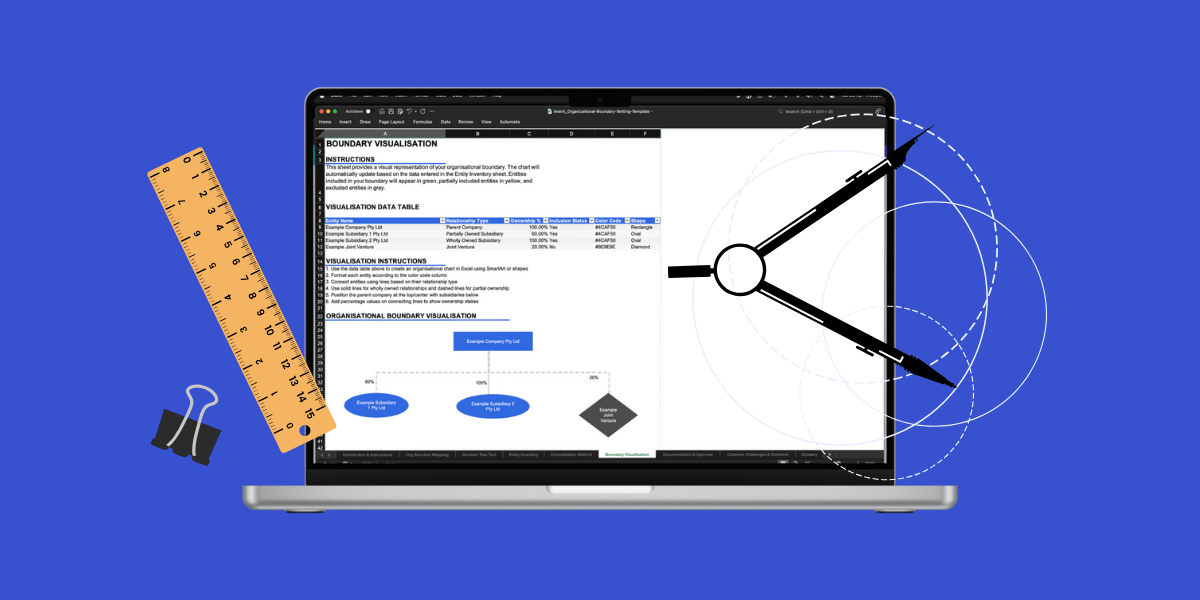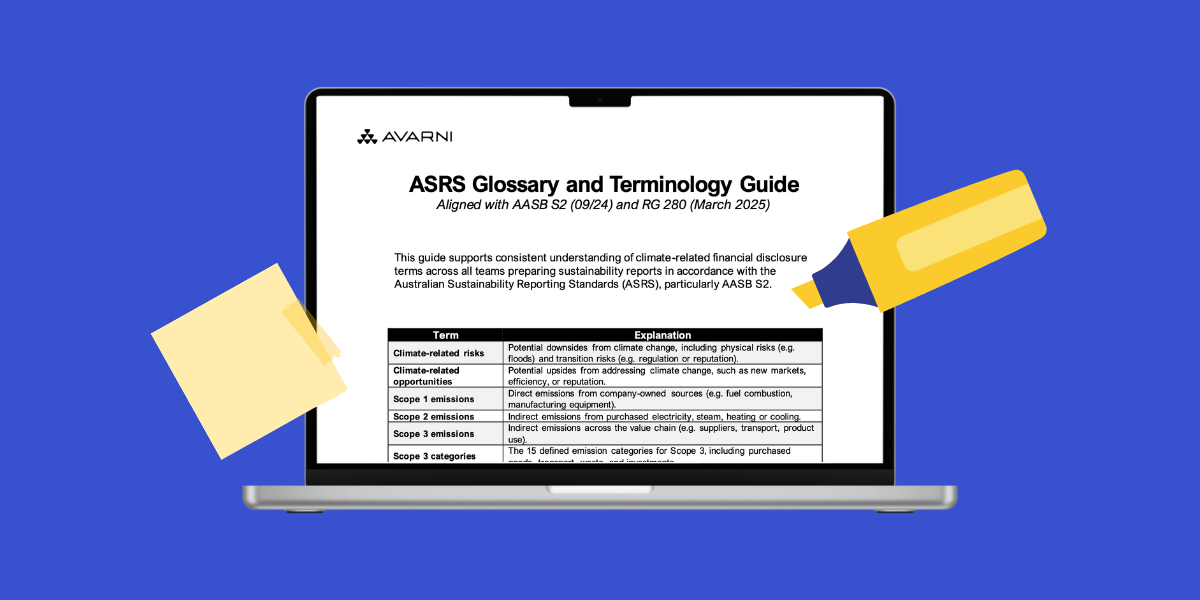Free Australian Sustainability Reporting Q&A Agent
Get instant answers to your AASB S2 climate disclosure queries and cut through complexity with clear, standard-aligned guidance.
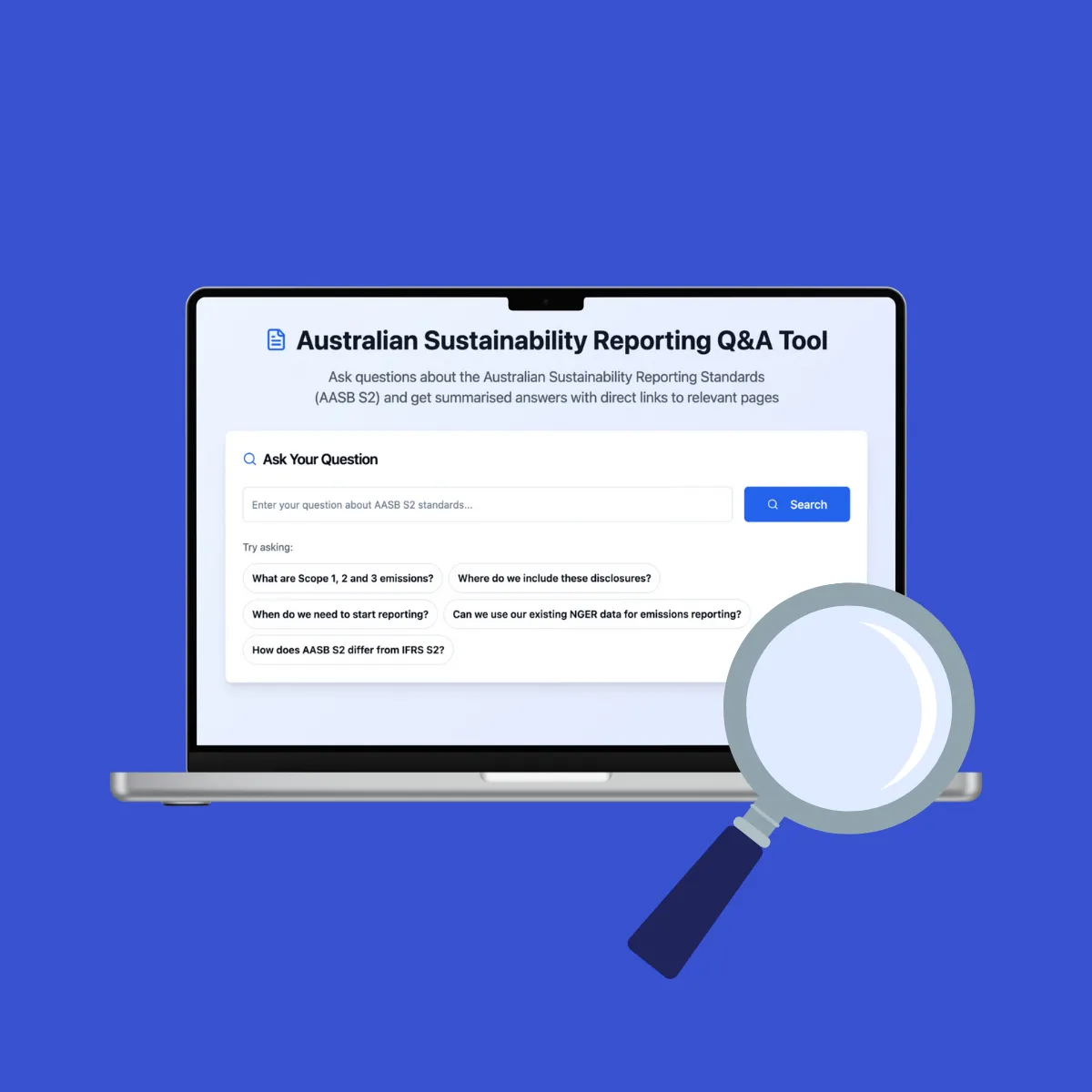
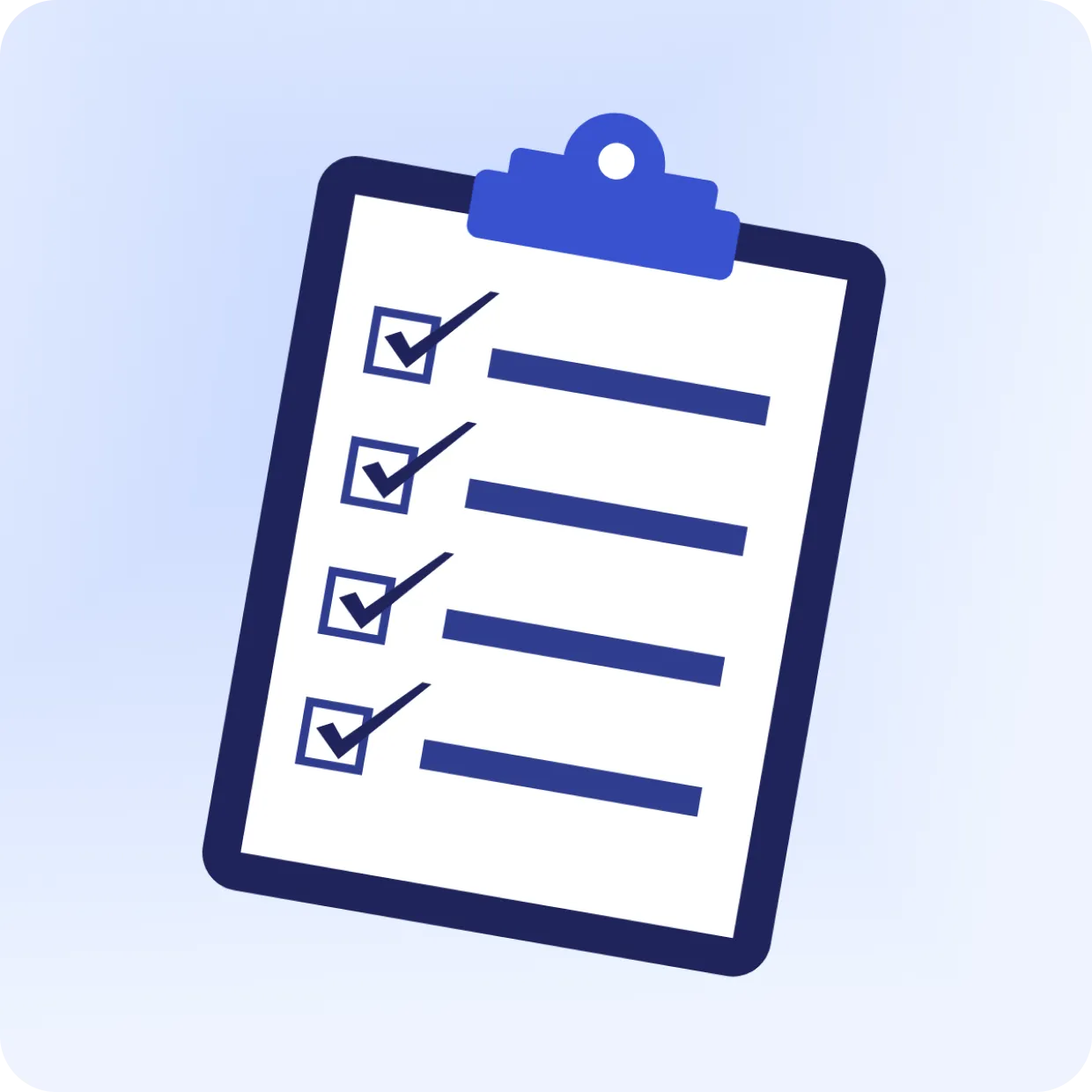
What you’ll get
- An interactive Q&A tool that answers questions on Australia’s climate disclosure rules in plain language.
- Direct links to the AASB S2 standard so you can verify answers and explore details instantly.
- Guidance aligned with the GHG Protocol, covering Scope 1, 2, and 3 emissions.
- A simple, fast interface designed to save time and reduce confusion for both first-time and experienced reporters.
- Free, no-sign-up access so you can start using it immediately.
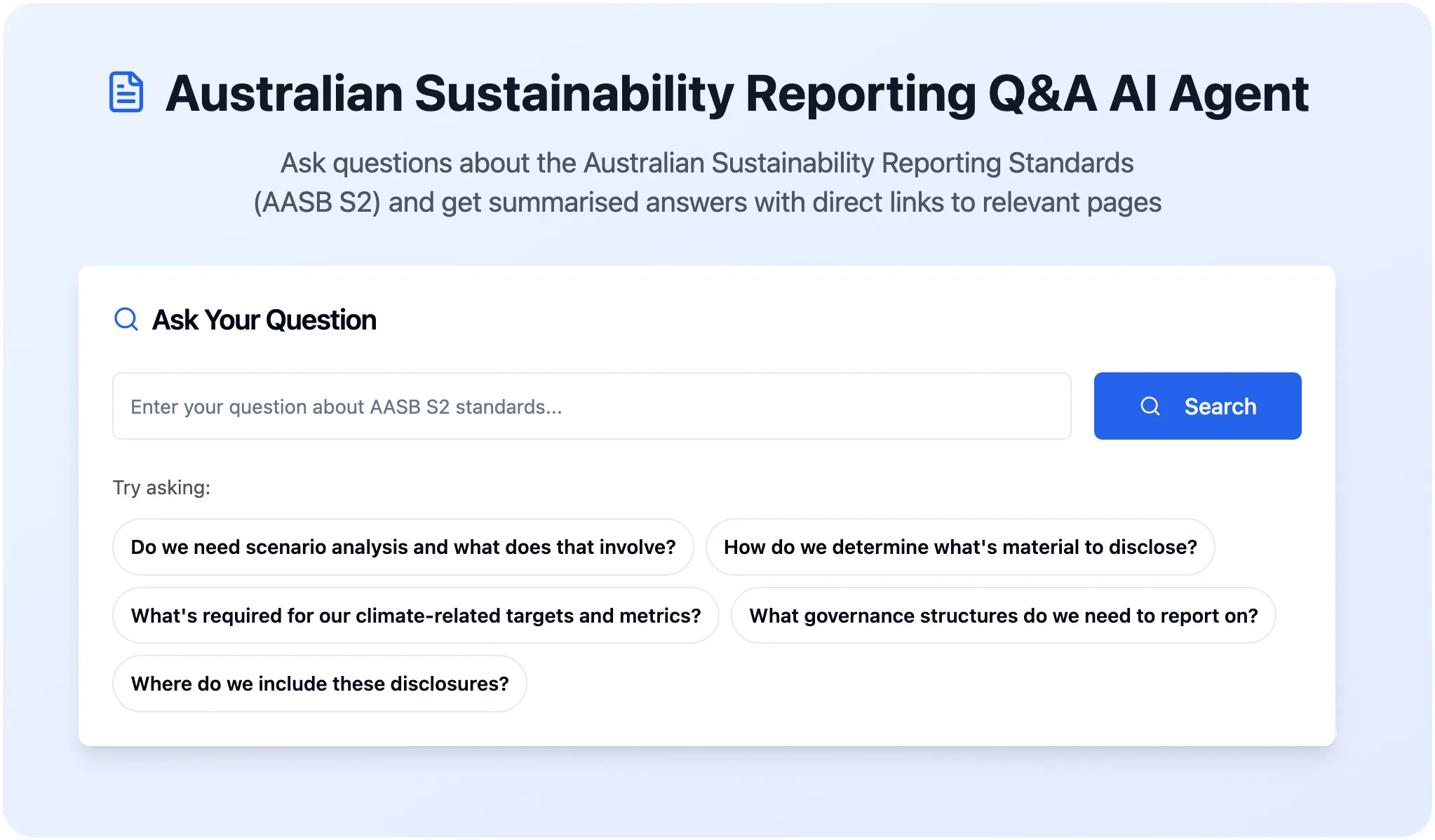
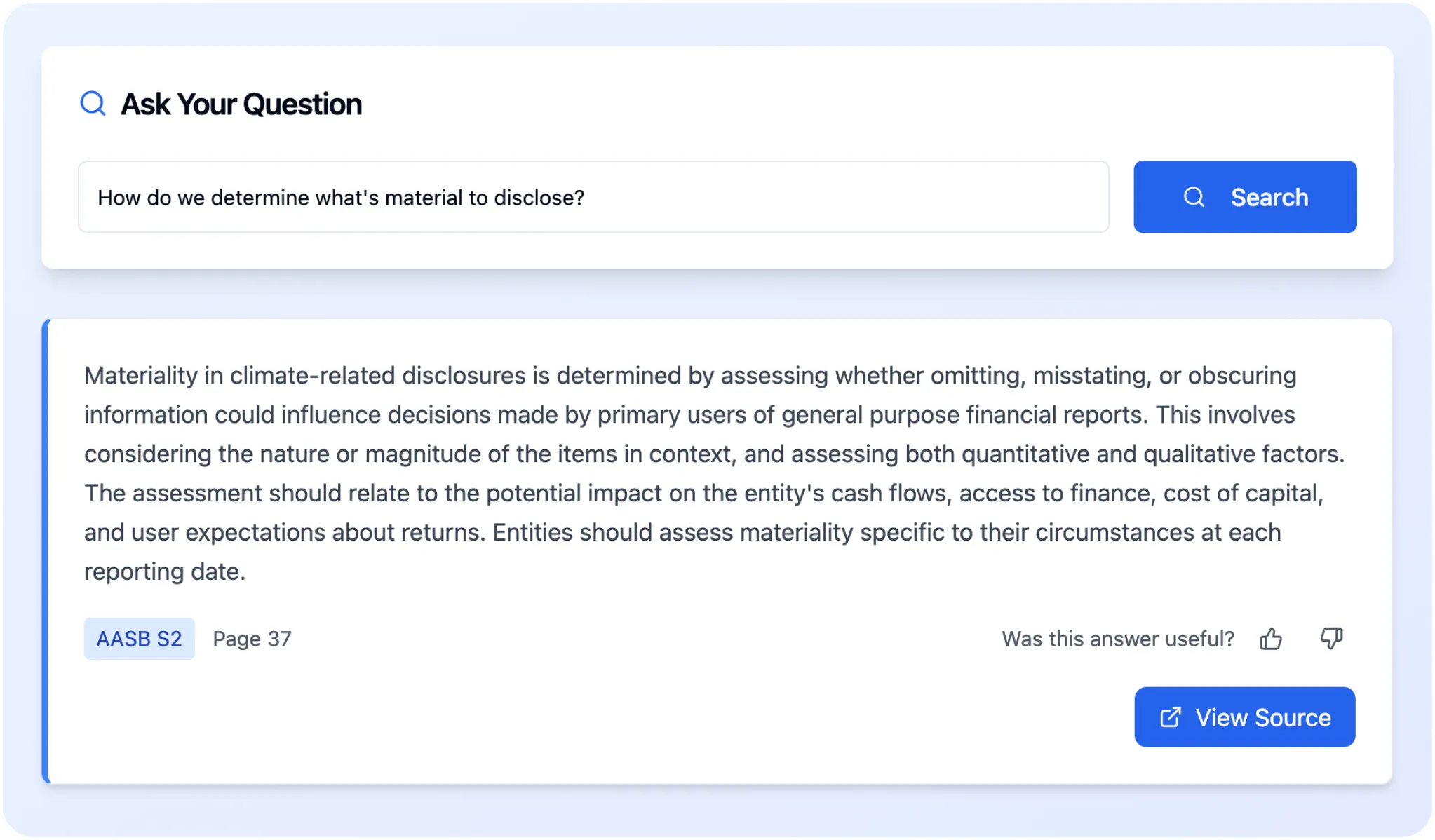
Get started now — then scale with Avarni
Access the Free Australian Sustainability Reporting Q&A Agent
Climate disclosure complexities slowing you down? This free Q&A Agent lets you type plain-language questions and get instant, accurate answers clearly aligned with AASB S2 — complete with direct links to the official standard. It’s the perfect launchpad for teams taking their first steps in climate reporting.
Disclaimer: Avarni does not provide accounting, tax, business or legal advice. This template has been provided for information purposes only. You should consult your own professional advisors for advice directly relating to your business.
Got your template? Book a free 30 minute consultation
See exactly how your organisation can benefit from Avarni, with your data, your challenges, and our carbon accounting solutions.
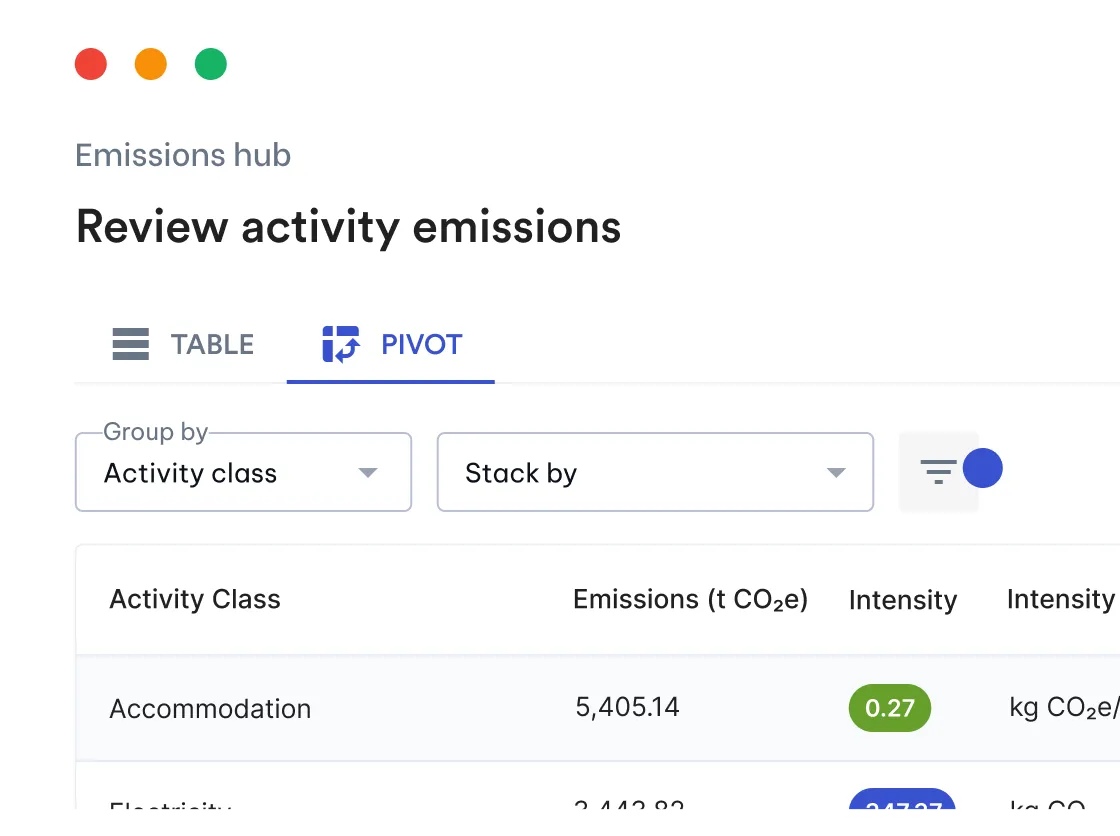
Learn more about Avarni’s carbon accounting software
See exactly how your organisation can benefit, with your data, your challenges, and our carbon accounting solutions.

